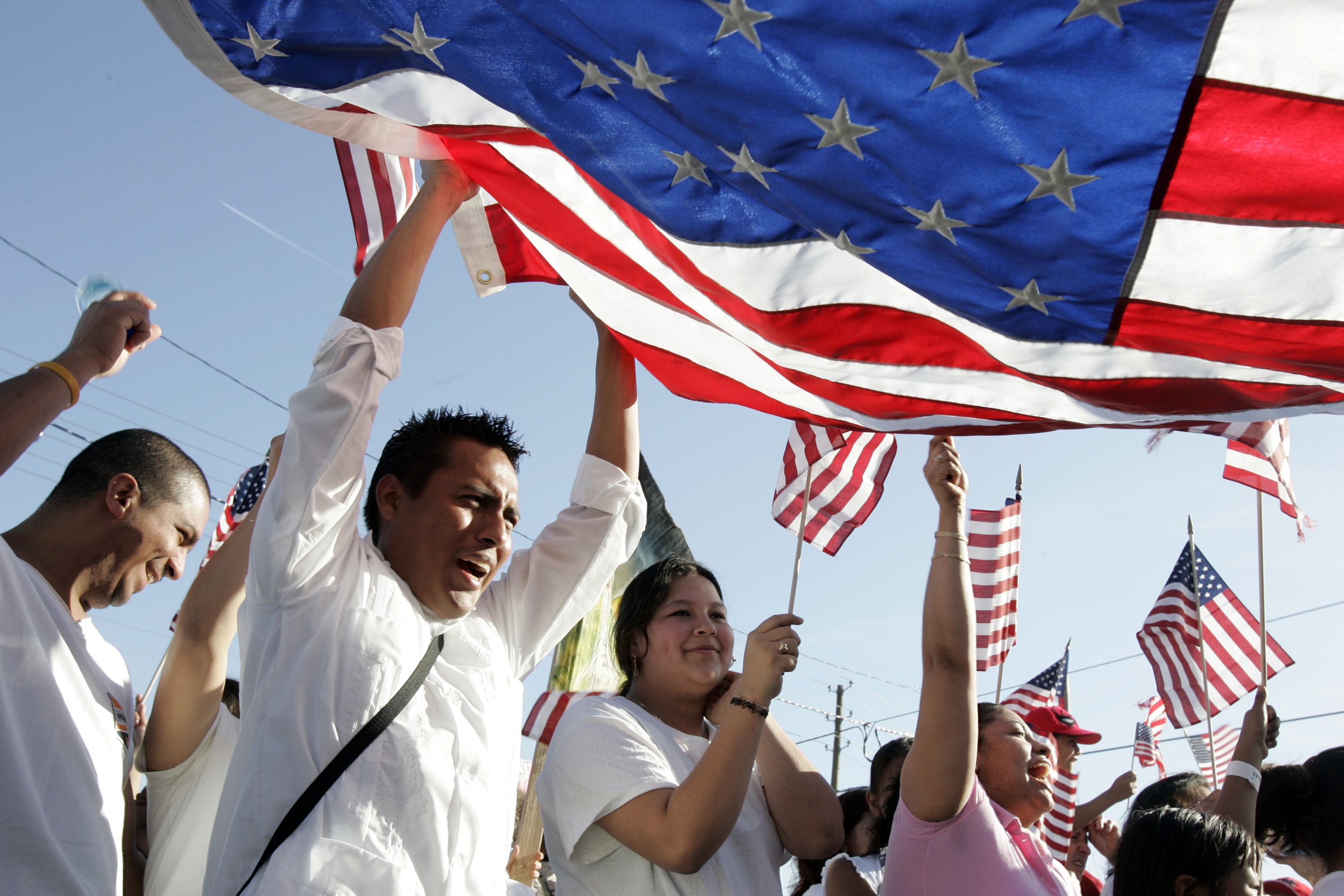As a Texan, I often hear complaints about our country’s immigration policy. Our state is among the most popular entry points into the US, and immigrants exert a profound influence upon our region. Given the human tendency to resist change and to feel less comfortable around the unfamiliar, it’s no surprise that there is resistance to immigration. Even though immigration has played such an integral role in our nation’s culture as to have earned us designation as “the melting pot,” it’s natural to want to stop time where it was in our childhoods or early adult lives in order to avoid the fear of unknowns presented by an ever-changing society.
But let’s look at this fear. Is it rational? Should we, in fact, be afraid of what will happen to our great state if immigrants continue to join us here? Or, is it time to dispel unfounded fears and welcome new faces and the gifts they bring? In examining the impact immigrants make on the state of Texas, it seems we have more reason for gratitude than fear.
By the Numbers: Immigrants in Texas
- Immigrants, Latinos, and Asians account for growing shares of the economy and electorate in Texas.
- Immigrants (the foreign-born) make up roughly one in six Texans, and one-third of them are naturalized U.S. citizens who are eligible to vote.
- “New Americans”—immigrants and the children of immigrants—account for more than one in ten registered voters in the state.
- Immigrants are not only integral to the state’s economy as workers, but also account for billions of dollars in tax revenue and consumer purchasing power.
- Latinos and Asians (both foreign-born and native-born) wield $297 billion in consumer purchasing power
- Immigrant-owned businesses had sales and receipts of $102.1 billion and employed more than 600,000 people at last count.
As the economy continues to grow, Texas can ill-afford to alienate such a critical component of its labor force, tax base, and business community.
More than 1 in 4 Texans are Latino or Asian—and they vote.
- The Latino share of Texas’s population grew from 25.5% in 1990, to 32.0% in 2000, to 38.4% (or 10.2 million people) in 2013. The Asian share of the population grew from 1.8% in 1990, to 2.7% in 2000, to 4.1% (or 1.1 million people) in 2013, according to the U.S. Census Bureau.
- Latinos accounted for 21.9% (or 1.9 million) of Texas voters in the 2012 elections, and Asians 2.5% (214,000), according to the U.S. Census Bureau.
- In Texas, 87.7% of children with immigrant parents were U.S. citizens in 2009, according to data from the Urban Institute.
- In 2009, 86.2% of children in Asian families in Texas were U.S. citizens, as were 93.2% of children in Latino families.
Immigrant, Latino, and Asian entrepreneurs and consumers add tens of billions of dollars and hundreds of thousands of jobs to Texas’s economy.
- The 2014 purchasing power of Latinos in Texas totaled $240.7 billion—an increase of 634% since 1990. Asian buying power totaled $56.3 billion—an increase of 1,133% since 1990, according to the Selig Center for Economic Growth at the University of Georgia.
- Immigration boosts housing values in communities. From 2000 to 2010, according to the Americas Society/Council of the Americas, the value added by immigration to the price of the average home was $26,813 in Harris County; $8,148 in Dallas County; $10,210 in Tarrant County; $6,632 in Bexar County; $6,128 in Travis County; $2,503 in El Paso County; $7,129 in Collin County; $5,509 in Hidalgo County; $5,228 in Denton County; $7,876 in Fort Bend County; $3,088 in Montgomery County; $1,583 in Cameron County; $2,536 in Williamson County; and $515 in Nueces County.
- Texas’s 447,589 Latino-owned businesses had sales and receipts of $61.9 billion and employed 395,673 people in 2007, the last year for which data is available. The state’s 114,297 Asian-owned businesses had sales and receipts of $40.2 billion and employed 206,545 people in 2007, according to the U.S. Census Bureau’s Survey of Business Owners.
- From 2006 to 2010, there were 256,849 new immigrant business owners in Texas, and they had total net business income of $10 billion, which makes up 16.7% of all net business income in the state, according to Robert Fairlie of the University of California, Santa Cruz.
- In 2010, 20.3% of all business owners in Texas were foreign-born, as were 31% of business owners in the Houston metropolitan area, 25% of business owners in the Dallas metro area, and 25% of business owners in the San Antonio metro area, according to the Fiscal Policy Institute.
Immigrants are integral to Texas’s economy as workers and taxpayers.
- Immigrants comprised 21.3% of the state’s workforce in 2013 (or 2.8 million workers), according to the U.S. Census Bureau.
- Immigrants accounted for 21% of total economic output in the Houston metropolitan area and 16% of economic output in the Dallas metropolitan area as of 2007, according to a study by the Fiscal Policy Institute.
- Unauthorized immigrants comprised 8.9% of the state’s workforce (or 1.2 million workers) in 2012, according to a report by the Pew Hispanic Center.
- Latinos in Texas paid $23.6 billion in federal taxes and $11.4 billion in state/local taxes in 2013, according to the Partnership for a New American Economy. In particular, foreign-born Latinos paid $8.4 billion in federal taxes and $4.6 billion in state/local taxes.
- The federal tax contribution of Texas’ Latino population included $17.9 billion to Social Security and $4.2 billion to Medicare in 2013. Foreign-born Latinos contributed $6.9 billion to Social Security and $1.6 billion to Medicare that year.
Unauthorized immigrants pay taxes, too.
- Unauthorized immigrants in Texas paid $1.6 billion in state and local taxes in 2010, including $1.4 billion in sales taxes and $204.4 million in property taxes, according to data from the Institute for Taxation and Economic Policy.
- Were unauthorized immigrants in Texas to have legal status, they would pay $1.7 billion in state and local taxes, including $1.5 billion in sales taxes and $219.6 million in property taxes.
- If all unauthorized immigrants were removed from Texas, the state would lose $69.3 billion in economic activity, $30.8 billion in gross state product, and approximately 403,174 jobs, even accounting for adequate market adjustment time, according to a report by the Perryman Group.
Immigrants are integral to Texas’s economy as students.
- Texas’ 64,277 foreign students contributed $1.5 billion to the state’s economy in tuition, fees, and living expenses for the 2013-2014 academic year, according to NAFSA: Association of International Educators.
- Foreign students contribute to Texas’ metropolitan areas. From 2008 to 2012, according to the Brookings Institution, 7,217 foreign students paid $131 million in tuition and $106 million in living costs in the Austin-Round Rock-San Marcos metropolitan area. In the Beaumont-Port Arthur metro area, 1,680 foreign students paid $18.7 million in tuition and $16.8 million in living costs. In the College Station-Bryan metro area, 6,736 foreign students paid $95 million in tuition and $100 million in living costs. In the Dallas-Fort Worth-Arlington metro area, 25,353 foreign students paid $371 million in tuition and $277 million in living costs. In the El Paso metro area, 3,877 foreign students paid $18.2 million in tuition and $27.1 million in living costs. In the Houston-Sugarland-Baytown metro area, 14,785 foreign students paid $219 million in tuition and $170 million in living costs. In the Lubbock metro area, 2,979 foreign students paid $24.8 million in tuition and $27 million in living costs. In the San Antonio-New Braunfels metro area, 4,889 foreign students paid $73 million in tuition and $49.7 million in living costs.
- Foreign students also contribute to innovation in Texas. In 2009, “non-resident aliens” comprised 53.9% of master’s degrees and 52.8% of doctorate degrees in science, technology, engineering, and mathematics (STEM) fields, according to the Partnership for a New American Economy.
Naturalized citizens excel educationally.
- In Texas, 28.9% of foreign-born persons who were naturalized U.S. citizens in 2011 had a bachelor’s or higher degree, compared to 15.2% of noncitizens. At the same time, only 29.3% of naturalized citizens lacked a high-school diploma, compared to 53.7% of noncitizens.
- The number of immigrants in Texas with a college degree increased by 91.5% between 2000 and 2011, according to data from the Migration Policy Institute.
- In Texas, 75.2% of children with immigrant parents were considered “English proficient” as of 2009, to data from the Urban Institute.
- The English proficiency rate among Asian children in Texas was 85.7%, while for Latino children it was 80.7%, as of 2009.
As Texans, it’s time to embrace our newest neighbors. Not only do they make huge contributions to our state and local economies, but they will only continue to become more powerful as a voting bloc. They will determine the future leadership and policies of this state. If we are wise, we will refuse to make immigrants into enemies. Instead, let us build positive, productive, integrated communities that recognize and honor the economic, political, cultural and personal contributions of all participants.
If you or someone you know needs the advice of an immigration attorney, please contact our office today. With over 35 years as successful immigration law specialists, we can help you transition to the life you want here in the US.

